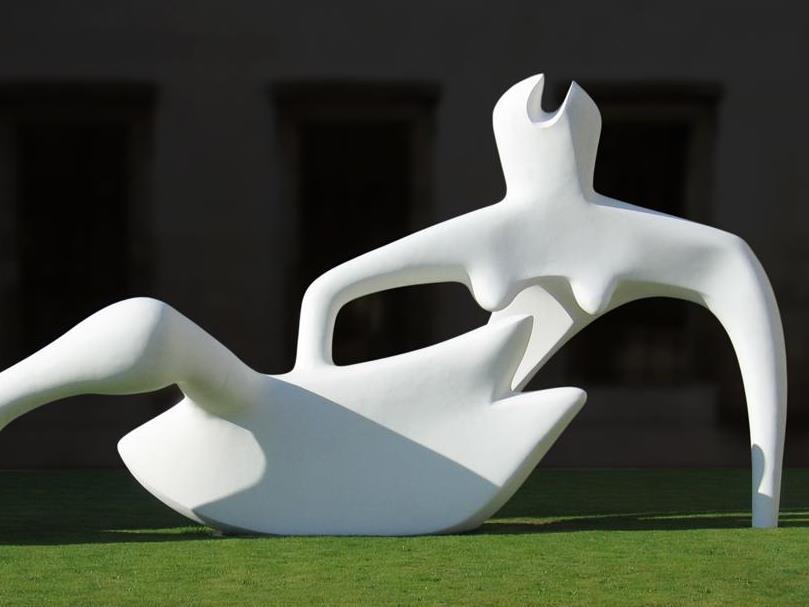International Women’s Day on 8 March raised many questions and statistics exploring the structural inequality between the sexes in Australia. Only four days previously, Gina Fairley asked us if women in the museum sector were smashing the glass ceiling to achieve leadership positions. Unfortunately, not even this sector could escape a few damning revelations.
In consultation with several of Australia’s leading arts professionals, including: Kim McKay, Director and CEO of the Australian Museum; Rose Hiscock, Director Powerhouse: Museum of Applied Arts and Sciences (MAAS),Tamara Winikoff, Executive Director NAVA and Ursula Sullivan, of the gallery Sullivan + Strumpf, Fairley explored the issues surrounding the imbalance of females in leadership roles.
Fairley’s article, while shedding light on the issues surrounding the gender disparity, rather simplifies the complexity of the problem and provides little workable solutions. I appreciate what she has done with the little space afforded to her, but as a young female arts professional, I seek a more robust investigation and action plan.
The consensus was that while progress is occurring, the march towards it is slow with a chronic lack of female leadership at state and national level. For example, two of the five primary cultural institutions under the New South Wales are led by women and of more than 20 directors in the Council of Australasian Museum Directors (CAMD), only five are women. Going some way to tip the balance was the announcement last week that Janet Carding will take over as the new Director of the Tasmanian Museum and Art Gallery (TMAG). However, this is the first of our State art museums to appoint a woman since Betty Churcher held positions at the AGWA and NGA in the 1980s and 90s respectively.
Although imbalanced at the top, this is shifting in the lower ranks due to the strong presence of female directors in regional galleries and museums. Below that, many women hold various leadership roles in institutions and organisations, yet have not managed to grasp directorship.
The discussion surrounds five key issues which could lead to better parity: equal pay, bolster lagging confidence, more board representation, mentorship programs, and better parental systems. One particularly damning statistic was that cited by Winikoff. An Australia Council commissioned study that showed that two thirds of visual artists are women but women in the arts earned on average 57% less than men in 2002, though by 2010 the gap was narrowing to 38%. Further, statistics published by the Countess blog reveal that while the majority of art school graduates are female (65%), their representation in major exhibitions, biennales and art fairs is outnumbered by their male counterparts. This is again replicated in arts sales through commercial galleries.
Winikoff’s solution to this? Using a throw away comment about using positive discrimination to get a balance. As for solutions to the other issues, well there aren’t really any. We are told to bolster our confidence to take on higher roles, that there isn’t adequate board representation and that we need mentorship programs and better parental systems. This discussion without action or proper suggestion does little to inspire hope for change at the top levels.
Save reviews similar to 2012’s Women in Theatre research report and action plan for the Australia Council or the installation of a quota system, action seems to come in the form of museums, galleries and their associations programming professional development into their outreach activities. Hiscock mentions that CAMD will this year introduce a mentoring program. She and McKay will work to realise that vision. My own research revealed that the Nelson Meers foundation with Creative Partnerships Australia and Chief Executive Women provides three scholarships specifically designed to develop the leadership skills of women working in the cultural sector.
Other forms of mentorship have taken place unofficially, with Sullivan professing that both she and her gallery partner Joanna Strumpf have mentored women. I am sure that other professional development programs and informal mentors continue to benefit many more women across the country.
But what about those of us that cannot, for a multitude of reasons, access these resources? For those of us left behind I propose action on a grassroots level, to form networks of diverse arts professionals to upskill each other.
One such method is by locating, or forming, a #drinkingaboutmuseums group in your local area. Not just an excuse to drink and socialise, such groups could take on a larger function., such a museum visits, behind-the-scenes tours and presentations. One meeting could involve a workshop and the next, just a social outing. The point is that contacts are made, networking skills are enhanced and professional skills exchanged.
Anyone familiar with Sheryl Sandberg’s call to arms, Lean In, may be aware of the Lean In Circles, which sprang up in response. These circles are small groups of people who want more, regularly meeting to learn and grow together. Over 7,000 such circles exist worldwide and are unique as the individuals who start them. Their common goal, however, is to develop confidence among their members through the power of peer support. By registering online to lean in’s circle hub, members receive the support and resources such as meeting guide and activities, videos on important topics and skills, a group email, a system for connecting with other circles and material to support your circle.
These are but some ways we can develop professionally to ensure that the legacy of gender disparity in Museum sector leadership is discontinued. Let’s continue this discussion, please comment below.





